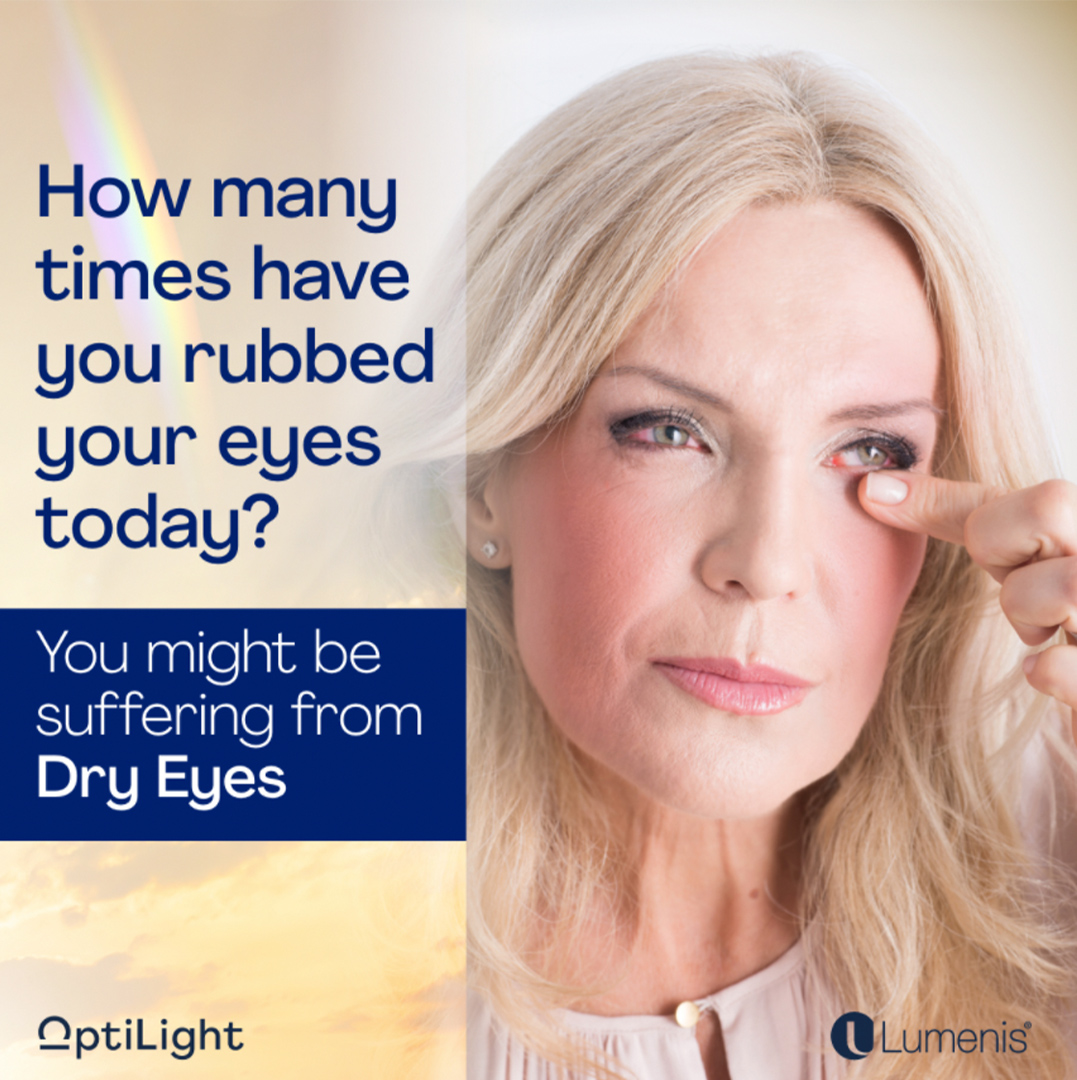Dry eye disease is becoming increasingly common, affecting millions of people worldwide. This chronic condition can significantly impact your life, sometimes making even the smallest of tasks seem difficult.
If you have eye pain, blurry vision, and dry or watery eyes, it could be a sign that you have dry eye disease. But don’t worry! With an in-depth eye exam, our team can assess your vision and eye health to get you the treatment you need.
With treatments like OptiLight by Lumenis, we can help manage your dry eye symptoms and get you back to seeing clearly and comfortably. Keep reading to learn more about OptiLight by Lumenis and how it can improve your life.
What Is Dry Eye Disease?
Dry eye disease is a common eye condition that occurs when there is an issue with any one of the three components of your tears.
Your tears are made up of 3 distinct layers, all of which work together to keep your eyes healthy:
-
The oily layer prevents your tears from evaporating too quickly
-
The watery layer delivers nutrients to your eyes
-
The mucus layer keeps your tear film stuck to the surface of your eyes

What are the 2 Types of Dry Eye Disease?
There are two types of dry eye disease.
Evaporative Dry Eye (EDE)
EDE is the most common type of dry eye disease. This type of dry eye occurs when you lack the proper amount of oil in your tears. When this happens, your tears can evaporate too quickly, drying out your eyes.
In some cases, EDE can be caused by meibomian gland dysfunction, a disorder where the meibomian glands in your eyes become blocked, limiting the amount of oil being produced for your tears.
Aqueous Tear Deficiency (ATD)
If you suffer from ATD, your eyes lack the aqueous layer in your tears. This means that your eyes aren’t producing enough tears to keep the eye moist, which can lead to irritating and uncomfortable symptoms.
What are the Symptoms of Dry Eye Disease?
If you are suffering from dry eye disease, you may notice any of the following symptoms:
-
A burning or scratchy sensation in your eyes
-
Stringy mucus in or around your eyes
-
Irritated or overly-watery eyes
-
Sensitivity to light or photophobia
-
Eye redness, blurred vision, or eye fatigue
-
A sensation of having something in your eyes
Difficulty wearing contact lenses
If you are experiencing any of these symptoms, book an appointment with your eye doctor to receive a dry eye disease diagnosis and get the treatment you need.
What Is OptiLight by Lumenis?
OptiLight by Lumenis is a safe, gentle, and effective treatment done to manage dry eye disease. This non-invasive procedure is the first and only FDA-approved intense pulsed light (IPL) treatment for dry eye management.
OptiLight uses pulses of light precisely administered in the area below the eyes to reduce dry eye symptoms. This 10-15 minute procedure can relieve dry eye symptoms by:
-
Increasing tear break-up time
-
Reducing the amount of demodex mites and bacteria around your eyes
-
Decreasing inflammation inflammation
Improving meibomian gland functionality
What to Expect
If your eye doctor has recommended the OptiLight treatment, they will go over everything you can expect before, during, and after your appointment.
Preparing for Your Appointment
To prepare for your appointment you should avoid:
-
Using skin brightening agents or serums for the week before your appointment
-
Using tanning beds 1 month prior to your appointment
-
Getting botox for at least 3 months before your appointment
-
Taking oral isotretinoin, tetracycline, or doxycycline in the 3 months prior to your appointment
The OptiLight Treatment
This treatment is fast and simple, taking only 10–15 minutes. During your treatment your doctor will apply a cool gel on the treatment area and cover your eyes with shields to protect them.
As light is applied to the skin, you may experience a warm or a tapping sensation, but you shouldn’t feel any pain.
Post-Procedure Care
While side effects are uncommon, your eyes may feel slightly more dry or gritty for the day following your procedure. If you do experience dry eyes, you can use preservative-free artificial tears.
Following your treatment, your skin will be sensitive, so we recommend avoiding sun exposure and wearing sunscreen.
Am I a Good Candidate for OptiLight by Lumenis?
How do you know if OptiLight is the right treatment for you? During an eye exam, your doctor can determine whether or not it is the right option for you.
In general, OptiLight isn’t recommended for patients who:
-
Are taking certain medications, like Accutane
-
Have active acne
-
Suffer from certain skin disorders
-
Are susceptible to keloid scarring
-
Have severe scarring
Have severely sunburned recently
Find Relief Today
You don’t have to live with the uncomfortable symptoms of dry eye disease. With OptiLight by Lumenis, your symptoms can be managed effectively and efficiently, restoring your quality of life.
Our team is always here to help you find relief from dry eyes. Book an appointment today to see how OptiLight by Lumenis can help you!